Podcast: Play in new window | Download
Show Notes
In today’s episode, we talk further about how to make a low maintenance landscape.
Topics:
- Low resource plants
- Full coverage
- Reduce lawn maintenance
- Low maintenance lawn
- Good transitions
- Maintenance plan
Links for today’s episode:
- Launch Party!
- How to save 27 hours of work
- Consult with Ben
- Paul Tukey
- Rolling River Nursery
I’m Ben Hale your virtual design guide
to help you and your family have a
healthy beautiful landscape with less
work what’s up and welcome to episode
three of the aesthetic ecosystems
podcast today we’re going to be
continuing part two of episode two what
makes a low maintenance yard so we’re
going to talk about some more things
that you can do in your landscape your
yard that can save you time and energy
so you can have more time to do the
things you love in Episode two we talked
about several things we can do to make a
low maintenance yard the first thing and
most important which we also talked
about in more depth in episode one was
your mindset that your life is more
important than your yard while this may
seem funny to point out I think a lot of
times we have this flipped where we
prioritize our maintenance chores over
the things that are more important in
our lives so the very first and most
important thing is this mindset piece
and that’s why I’ve continued to talk
about it even though you may have heard
about it already and again like I said
in episode 2 if you haven’t gone back
and heard episode 1 in this mindset
piece I strongly encourage you to go and
do that because this piece is very
important although it might seem obvious
when we talk about it the other thing we
talked about was healthy plants having a
healthy plant makes a happy plant makes
an easy plant to take care of
in addition healthy soil healthy soil
provides the foundation for healthy
plants the right plant in the right
place makes a huge difference
perennials versus annuals in your garden
and followed up by grouped plantings
versus isolation of each plant as
individual specimens so that kind of
wraps up a summary of what episode 2 was
about if you didn’t hear it I encourage
you to go back and check it out for more
details and we’ll get into some more
cool stuff today that we can talk about
to make your look yard more
low-maintenance
and more beautiful at the same time the
first one we’re going to talk about is
low resource plants what I mean by low
resource plants are plants that don’t
require a lot of inputs there are
certain plants that require a lot of
fertility or a lot of effort to maintain
they might require a certain condition
that you don’t have present in your
landscape already so for example we
actually have some this is a mistake I
made in our landscape we have some
blueberry bushes in our front yard
because I love blueberries the plant
itself actually is is a very attractive
plant our base soil is alkaline or high
pH or basic there’s all mean the same
thing for for you
non science nerds and blueberries
require acidic soil conditions I planted
them where we used to have some some you
bushes and generally speaking pines and
evergreens they acidify soil so I
thought well if I pull these these
evergreen bushes out and replace them
with some black or blueberry bushes they
actually might thrive in this soil well
as it turns out because our base soil is
highly alkaline the the soil has begun
to revert to its alkaline conditions and
these plants have struggled in that
space so in order to keep these plants
to thrive I need to go and maintain the
soil pH to allow them to grow properly
so by low resource plants not only
having the right plant in the right
place but plants that don’t require
inputs of fertility or other conditions
a lot of times a plant may require a lot
of fertilizing too continuous growth
year after year at the extent you want
or to continue blooming the level of
flowers you want on them or whatever
some examples of low resource plants are
the most commonly the ones that grow in
horrible horrible conditions a lot of
times these are weeds unfortunately but
there are some very beautiful plants
that can grow in minimal resources and
most often
I think about when I think of low
resource plants I think about plants
that are native to the North American
Prairie while the Prairie itself can be
a very fertile ecosystem a lot of those
plants can thrive in poor conditions to
establish themselves and to begin
growing so some an example there could
be like like goldenrod is is be quickly
becoming a very accepted plant in the
garden as a beautiful accent to your
late summer in your fall with their
beautiful golden flowers that’s a great
example of a low resource plant it
doesn’t require a whole lot it can
maintain itself take care of itself on
its own and it will provide you with
beauty at the right time next we’re
gonna talk about full coverage so this
is kind of in place together with what
we talked about with group plantings
previously but full coverage goes beyond
that and saying if you think about most
people’s garden beds you see a plant
here a clump of plants there and in
between there’s a lot of space and the
more you can crowd that space with over
without overcrowding it and making your
plants struggle the tighter you can put
your plants the less space you give
opportunity for for plants that you
don’t want such as your typical weed
plants so you if you don’t want
dandelions growing in your garden one
great way to do that is to prevent this
space from being even opened in the
first place so if you provide an open
available space odds are eventually
something’s going to grow there that you
probably don’t want so by covering your
space more completely you prevent
unwanted growth of other things now this
coverage can be in plants which I
generally recommend because the more
full foliage you have the less you have
to continue to keep that space and
replenish it with other things that are
inanimate such as mulch or rock or
whatever you’re filling that space with
so if you’re filling it with plants that
can take care of themselves they do the
work for you without you having to do it
some examples full coverage full
coverage plantings is if you have say a
flower bed right and you have your
flowers that grow somewhere between a
foot to two feet tall and maybe behind
it you have a small backdrop with a
shrub or two and maybe even a small
accent tree well in between these small
flowers you can also plant a ground
cover and this would be a low growing
plant that maybe doesn’t provide a whole
lot of aesthetic value on its own but
altogether it pulls the whole design
together by creating a carpet of foliage
that prevents weeds from sprouting
through and filling that space other
things you can do for this full coverage
that if you don’t have plants available
to grow there or you can’t find the
right plant for the right place is you
can also fill it with things such as
mulch or so a wood mulch or even or rock
mulch as some people like to call it
just a gravel slash rock bed around your
plants there are certain advantages and
disadvantages to mulch and rock when
you’re thinking of mulch it’s something
over time you will have to Rican tin you
to replace to prevent weed growth and
you definitely want to have the right
mulch we’ll get into that in more detail
in the future in rocks as well you you
have to make sure you remove any debris
that might pile up on top of them or
eventually it will provide a substrate
on top of the rock for weeds to grow so
there are some caveats too if you want
to use something non living like a mulch
or some other type of covering there so
just something to think about now let’s
talk about the one we haven’t really
touched a whole lot upon your lawn yet
and for most people this is one of the
biggest time investments in a landscape
is the lawn
because it covers so much area of your
property and most people do want this
beautiful green carpet in front and
behind their house for relaxing for
aesthetic appeal and to let their kids
or grandkids play on it this might be
you and that’s that all of those desires
are totally fine however with the
typical American lawn
it’s a huge time investment that for me
I find it as a drain to be honest and
yes what I like to have space to relax
and to play and and to see my kids play
I don’t like to be taken away from
playtime by having to cut the grass and
be out there every weekend when it’s
really hot and usually non-optimal times
when we don’t have things scheduled I
have to go do these chores where it
might be sometimes it’s 90 degrees out
and that’s the only time I can cut the
grass so let’s talk about how we can
reduce lawn maintenance well first just
by simple scheduling of our tasks and
blocking them together and trying to
spread them out more we can reduce the
number of times we have to maintain our
lawn so that’s a big piece there
additionally we can we can this is going
back into the mindset piece but if we’re
not so hung hung up on having a totally
spotless lawn that everybody’s envious
of just because it’s a uniform massive
green of all the same size blade with
the same proportions in the same height
if we kind of let go of that feeling of
need to control the space it’ll free up
a lot of our stress and a lot of our
energy so if if a you determine maybe
it’s okay if they’re if one or two
dandelions creep into my lawn or a
couple here and there maybe there’s some
clover or or whatever you’re not so hung
up on having to go spray your lawn
having to go mow it all the time having
to go weed it and this by itself will
save a lot of energy and stress and
that’s very important now there are all
sorts of extremes he
and you can have a very low-maintenance
lawn that looks horrible
in some people’s minds or you can have a
very low-maintenance lawn that can be
very appealing but across that spectrum
there’s a significant change in the
mindset piece that you have to have in
order to get to that point and it’s a
lot of a lot different type of space
than your typical American lawn so right
now generally speaking most people cut
their grass right around two inches
maybe even lower and in order to
maintain that uniform height without
weeds it usually requires a significant
investment of time and chemical inputs
in order to maintain that appearance and
that uniformity now when you want to
transition to something that’s less
maintenance I do strongly require or
recommend a chemical free lawn and that
transition period does take a time
investment to first of all free yourself
from the feeling of needing to maintain
it to a certain standard as well as the
time for your grass and the soil
underneath it to adapt to the new
situation to the new lifestyle it has
generally speaking with our typical
chemical treated lawn you’re killing the
soil with the application of the
synthetic herbicides that you apply to
it and the synthetic fertilizers that
you apply to it so while it gives the
physical appearance of health underneath
the the grass plants themselves are
really struggling and the soil
underneath it is also dying at the same
time and that’s why if you find that you
start this process you continue to need
to reapply it on a more frequent basis
whether it’s a fertilizer or an
herbicide it’s a dependency that is a
self-fulfilling cycle so to break that
cycle is very difficult well I know I’ve
kind of gone off on a tangent here we’ll
go into more debt
on this and future episodes of how to
transition your lawn to something that
doesn’t take as much work and is also
much healthier for your family so we’ll
talk about that more but that’s a very
big piece in order to reduce your lawn
maintenance
in addition to reducing the maintenance
burden of your current lawn there are
also more extreme or radical transitions
you can do that replace your lawn or
transition your lawn to a
low-maintenance type lawn itself and it
doesn’t sound very clear there but
essentially what I’m saying is there’s
certain varieties of grass or other low
growing ground covers that provide a lot
of times they’re called an alternative
lawn but really I don’t necessarily see
them as an alternative is just say a
different type of one and some examples
of this we’ve actually tested some of
these in our own landscape is I’ve had a
really great success with this one type
of lawn called a no mow fescue lawn this
is only a northern climate lawn so in
southern Ohio were actually in the
transition phase of this lawn where if
you’re much south of say like Kentucky
or you’re middle of Tennessee this lawn
might not do well in the heat of the
summer in the warmer months it actually
requires a certain amount of cold cold
period to thrive that’s when the roots
develop on these colder season grasses
so this Nommo fescue it actually is a
very it’s a mix of varieties of
different fine fescues that can grow
these these very thin blades and they
grow they still grow almost eight to
twelve inches but they as they grow
they’re their blades aren’t strong
enough to support themselves so it kind
of flops over and gives us it’s kind of
like a little bit of a shaggy appearance
but it’s actually really appealing look
with like a rolling carpet of a lawn and
there’s a lot of nuances that go into
establishing certain different varieties
of grass even just your conventional
lawn making sure you establish it
properly
it goes a really long way to ensuring
the success and this goes
just as same with this this no mow lawn
and there are other examples as well but
this is one that I’ve specifically
experimented with with success but like
I said establishment is very important
as well with it so you can also
transition your lawn to wear this no mow
lawn that we have
I only mow are our most successful
section of it that is relatively free of
weeds
I don’t irrigate it I don’t water her
your I don’t irrigate it I don’t water
it and I don’t fertilize it and I only
mow it when it goes to seed in about
mid-june I’ll mow it then and I might
mow it toward the end of fall just
before the leaf drop and so I can pick
up the leaves and that’s about it it’s
really truly a no slash low-maintenance
lawn and it’s great so I think we’ve
done a pretty good bit on the lawns
there’s a lot that goes into lawn
maintenance and how we can reduce work
there but that’s all we’re gonna touch
on now for the sake of time and let’s
move on to the next piece which is good
quality transitions if you think about
your landscape
there are several transitions that occur
between one type of space to another so
this could be a transition between your
driveway to your lawn or walkway to your
lawn it could be transition between the
lawn and the garden bed or different
types of space like that the area around
a tree versus the rest of your garden or
area around a tree versus your lawn so
each of these transitions between
different types of space requires some
sort of border or barrier to prevent
unwanted growth of certain things and or
at the same time these transition can
also prevent the growth of unwanted
things such as wheats so if you don’t
have the right type of transition a good
durable transition then you will get
ongoing maintenance necessary or
unwanted growth of unwanted plants some
examples of good transitions the the
mind immediately goes toward borders
right so
these border pieces edging that you can
put in to mark the barrier between say a
lawn and a garden and those things as
long as you put in a durable border
these things can be very effective at
preventing unwanted growth of different
plants so things to think about when you
are looking at a transition space how do
you prevent the extended growth of
certain things whether it’s a garden
plant that you have that might expand
into your lawn you would want to prevent
that or alternatively providing an
unwanted plant space to grow we’re gonna
finish up with a maintenance plan so a
low-maintenance yard requires a low
maintenance plan that’s the simple piece
here so a lot of time if you consider
your maintenance regime for your yard
most people they have a flurry of
activity in the spring followed by a
summer maintenance routine and and you
might have a certain project or two that
you’re building projects are great
that’s how you transition on yard is and
grow beauty and in your yard is through
projects so we’re not going to talk
about the project piece here but
specifically the ongoing maintenance
part so aside from projects in summer
you also have your summer maintenance
routine a lot of times this is mowing
weeding spraying sometimes there’s a
fertilizing going on and then followed
up by your fall activity again which is
a lot of times there’s a fertilization
routine for your lawn and your garden
getting ready for the dormancy of a
cooler season in northern climates and
moving into winter or or a dormant
season of the colder seasons during this
whole year-long maintenance regime most
people have quite a bit of activity that
they’re doing in their yard that they
don’t necessarily want to be doing but
they want the beauty that comes out of
this maintenance plan so if we
transition to just overall focusing on
reducing mate
it’s that focus in itself will help
release some of the burden that you put
on yourself to maintain your yard so by
just letting things get out of control
just a little bit more in between your
maintenance program or spending a little
more time in between mowings really can
go a long way to stretching out some of
this maintenance regime that you might
have and free up more time and space in
your lifestyle so aside from complete
redesign or incremental redesign of your
space there are just typical mindset
things you can do to change your
lifestyle around your yard so for me
with our yard I actually put a priority
over our yard with our family and this
means when I get home from work during
the summer a lot of times when I’m
planning to mow the lawn or take care of
some over growing weeds in the garden
instead what I’ll do is sometimes I’ll
I’ll push off those plans in order to go
to the park with my kids or go take them
for a hike if it’s a beautiful day why
waste such a beautiful day doing chores
when you could be spending it with your
family so to the chagrin of my neighbors
sometimes I put off maintenance plans
and everybody’s the better for it really
at the end of the day because by waiting
just a few more days to cut the grass or
to pull some weeds it doesn’t really
make it matter it actually frees up your
time and your energy and your stress and
then in the the low points of activity
or when things aren’t as great it might
be a cloudy day or whatever you can go
out and you mow the grass take care of
things or when you’re feeling low energy
and maybe a little bored it can be
something you do to get up and get
moving so just this change it kind of
goes back to the the first point change
in mindset with this change of mindset
and seeing how it affects your
maintenance plan you can really free up
some of your time and more importantly
your energy and a reduced stress level
that can make a big difference in your
life so that’s all I’ve got as far as
what makes a low maintenance yard that
covers a lot of points there are a lot
of nuances that can go in here we could
talk and talk about other things we can
do but overall these are the points I
picked out as the primary drivers of
making a low maintenance yard
aside from total redesign of your yard
in your landscape which to be honest
that that would be great that would be
awesome I would love to do it to our
yard but the reality is a lot of times
we don’t have the time to do a complete
full overhaul or the money or the just
physical planning capability to do
something like that so in the mean time
these are the things that we can do in
our yard in our life to free up time to
reduce our burden when it comes to our
yard and to still have a beautiful
attractive landscape so to kind of recap
some of these things we’ve talked about
we started off by talking about the
right mindset so episode 1 we talked
about that your your life your family
your loved ones your time is much more
important than your yard and while we
want to have a beautiful yard we don’t
want it to rule our lifestyle a lot of
the factors that go into it is is around
plants and so we talked about healthy
plants having good happy healthy plants
goes a long way toward making a
low-maintenance landscape and so
understanding the right factors that
make a healthy plant without having to
provide continuous long-term inputs to
make that happy plant will in turn make
a beautiful landscape with less work
healthy soil is the foundation to
healthy plants so that’s the next piece
is ensuring that you have good healthy
soil as a foundation for your plant
growth having the right plant in the
right place whether it’s a native plant
that’s well adapted to your
through long-term evolution or more
recently it might be a introduced exotic
that hopefully is not invasive but well
adapted to the conditions that you live
in perennial plants provide a long-term
beauty that comes back every year
without a significant amount of input
provided that you’ve put it in the right
place with the right conditions grouped
plantings provide a reduced maintenance
burden by grouping together the type of
maintenance you have to do in a specific
space so that was in a nutshell what
episode 2 is about in episode 3 we
talked about having low resource plants
to begin with so low resource plants are
plants that don’t require a ton of
fertility unless you live in beautiful
lush forests with great soil most likely
the fertility in your landscape is
slightly reduced or significantly
reduced and so establishing plants that
can take care of themselves and reduce
fertility conditions are very important
providing full coverage in your garden
areas and in your lawn prevents the
unwanted growth of weeds or well that’s
basically it unwanted growth of weeds an
unwanted plant is considered a weed so
so growth of weeds is prevented by full
coverage of your landscape a reduced
lawn maintenance routine really goes a
long way to providing you extra time and
reducing your stress per in workload
along with that establishing a
low-maintenance lawn to begin with if
you’re establishing a new lawn are ready
to re-establish your lawn this these
options can be really beneficial in the
long term by providing Beauty on its own
without significant inputs like a
conventional one good strong transition
phases are very important in between
different types of areas of your garden
in your lawn so this could be
the barrier between a garden bed and
your lawns such as your typically
thought of Porter so a durable border
goes a long way to preventing expansion
of your garden bed into your lawn or
expansion of your lawn into your garden
bed at the same time it also helps
prevent weed growth in these transition
areas and to wrap up we kind of came
full circle with a maintenance plan that
reflects your mindset that your life
your lifestyle is more important than
your yard when it comes to maintenance
so with that we wrap up our review of
what makes a low-maintenance yard and I
really hope these these ideas kind of
spur some new thinking for you of how
you can transform your life through your
landscape so I’d love to hear from you
what you’re planning on doing with your
yard as well as I would love to hear
Hugh subscribing to the podcast to
listen to new episodes and to leave a
review in iTunes or your favorite format
to listen to this show okay now it’s
time to talk about the launch party guys
excuse me not party but partay the
launch party is for the first two months
of the show from March 11th through May
help spread the word spread the word
about the show I really appreciate your
enthusiasm and interest in this show and
I want to get you guys involved and have
some fun while we’re doing it so this is
a chance to have some fun too for us to
get connected to win some prizes and
let’s talk about the prizes before we
talk about what we’re doing so what are
the prizes weakly I’m offering a free
consultation with me Ben Hale which is
normally a $99 value so one person each
week that gets involved in the launch
partay gets a free consultation I’m also
giving away a free offer for one of my
ebooks ten ways to get more beauty with
less work which is the $19 value next
the grand prize there is only one of
these we’re giving away through this
whole launch party so at the end of the
launch partay the organic lawn care
manual by
two key so Paul Tookie himself has
offered to give away one free book to a
lucky winner that’s getting involved in
this launch party and this book is all
about how to manage a healthy lawn from
anything from a golf course style on to
your low maintenance lawn which of
course is something I prefer here on
this show right
I own this book I’ve read this book
multiple times I’ve given it away it’s a
kind of a tattered and worn version that
I have and I use some of these practices
in my own lines so I love this book and
I highly promoted as well and you’ll
hear me talk about it throughout the
show but Paul Tookie has been kind
enough to offer a copy of his book as a
grand prize and there’s also a special
surprise for everybody that’s going to
be getting involved in the launch partay
the rolling river nursery out of
California has offered a special
surprise for everybody that’s involved
the rolling river nursery is a USDA
certified organic nursery so I went
online and I looked around for nurseries
that have online availability ship
through the continental US and have some
great offerings and rolling river
nursery is being kind enough to become
involved with our launch party and
they’re not only are they online
availability but they also are certified
organic which means they don’t use any
harmful herbicides or pesticides that
you have to be concerned with your
family about and so what you’re getting
is a safe and healthy plant they also
offer a ton of edible plants and trees
and shrubs cacti and succulents so they
offer several trees and shrubs that are
adaptable throughout the most of the
United States so definitely worth
checking them out and in addition these
guys are also involved with a nonprofit
in Southern California to help local
food movements called planting justice
org so if you want to learn more about
them you can go to rolling River nursery
calm and I also want to give a shout out
to Paul Tukey’s website for his organic
lawn care manual and his other works is
Paul to keep calm PA UL t uke Y and to
sum up guys okay you want to learn how
to get involved with this launch party
go over to aesthetic ecosystems calm
/ pod launch and that’s p OD Lau n CH
there’s a link in the show notes and
that’s that’s gonna give you all the
instructions on how to get involved
there’s two ways specifically to get
involved one is through sharing with
your peeps on Facebook and the other is
through leaving a review on iTunes
both of these are gonna help spread the
word about the show and get other people
other friends listening to it as well
and I sure appreciate your help here and
and likewise this is gonna be a fun time
so so going over and – ascetic
ecosystems calm / pod launch – get
involved so thanks for coming by and
remember whatever you do live with
passion and make tomorrow better than
today
[Music]

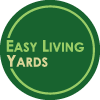
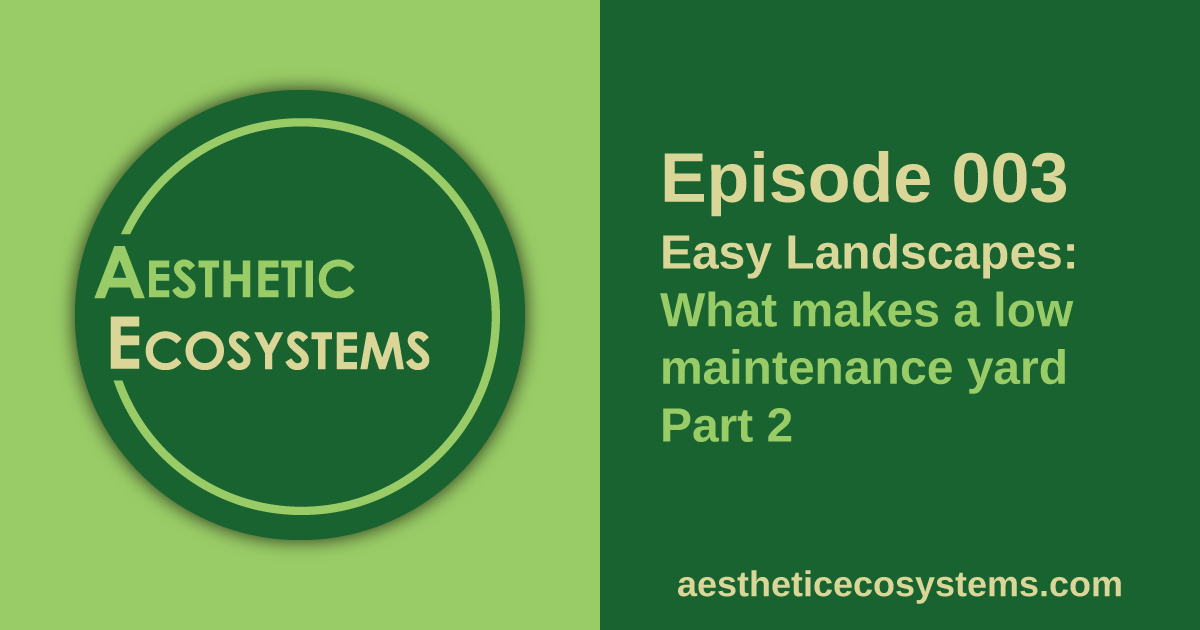
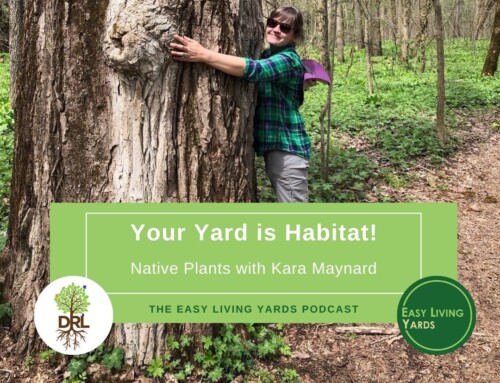

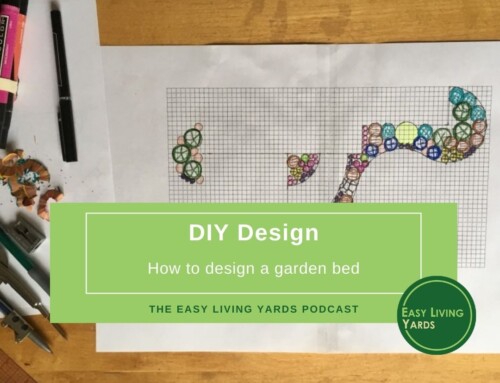

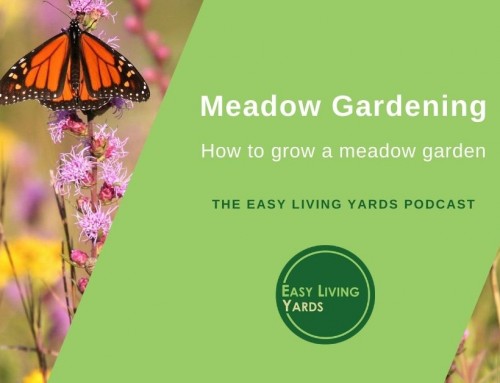
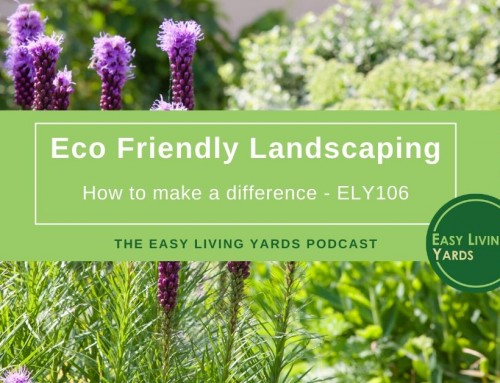
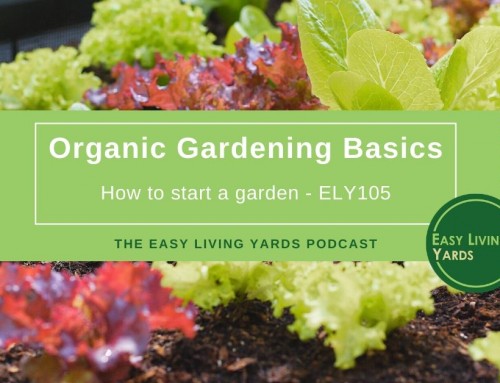
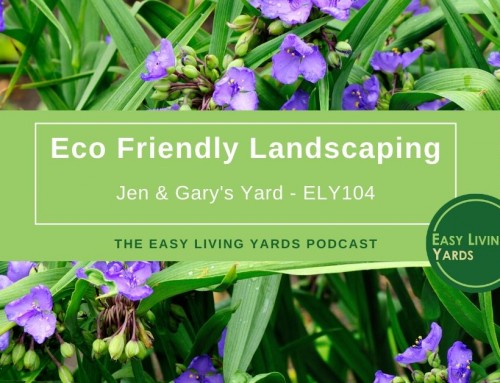
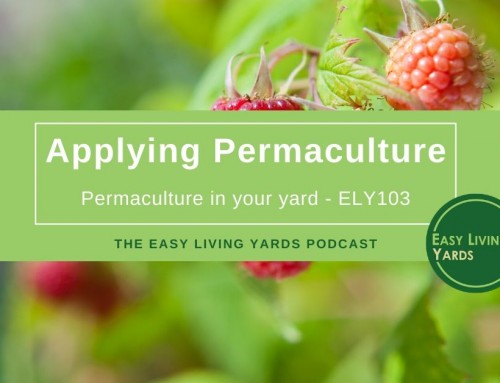
I am planning a picknick area .I have landscape some of the area. I tried growing grass however the shade area and the tree have produce difficulties on making this area good for me
I looking for a low budget and good result good for me
I need some ideas in achieving a good look and low maintenance idea for this area.
Hi Carlton! Sounds like a fun idea! Is this for a family gathering space? Do you hope to have picnic tables in the area, or just an open space to eat on the ground?
It can be very difficult growing grass under shade conditions, especially with certain soil types and high traffic. What soil do you have, and what region do you live? We could potentially consider other planted options. It may also be easiest to use mulch or gravel underneath the picnic table area, and plant a groundcover outside of it where there’s less walking.
On the plus side, shade trees can be awesome places to hang out in hot summer weather!
-Ben